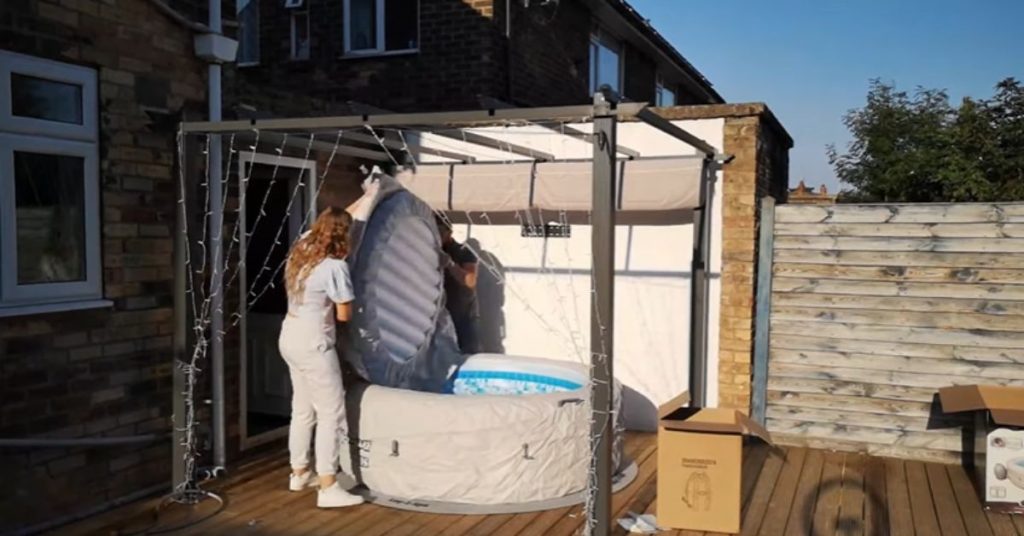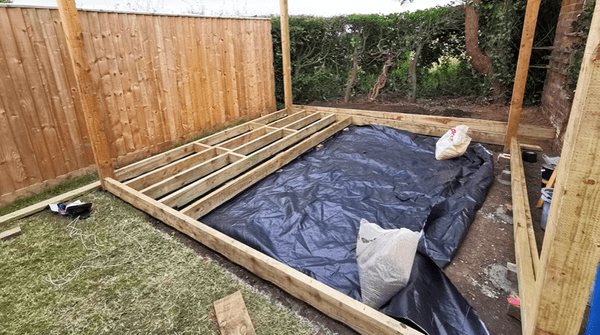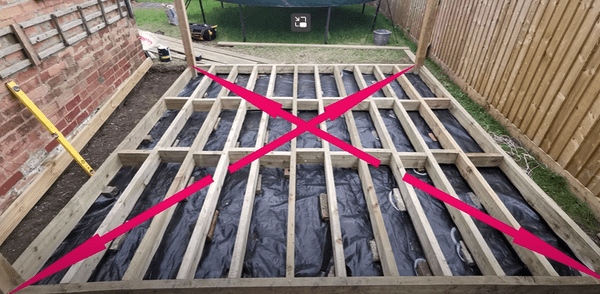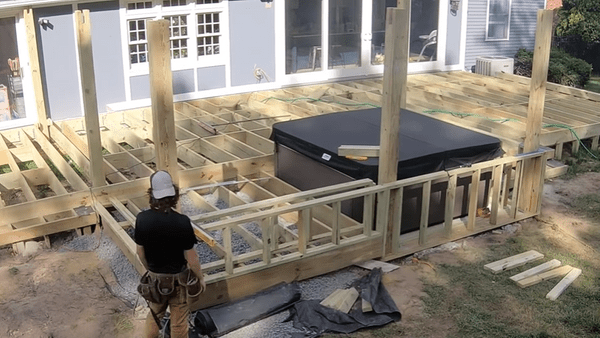We have written this article to help you understand how to build a hot tub deck. You will learn about the materials used, the types of tools you need, and how to install them.
You may wonder how to build a deck if you've never made one before and whether or not you should hire a professional to do it for you. In this article, we'll discuss all of the factors to consider when you're building a deck, and we'll also show you precisely what you need to do to create your deck.
When you're ready to build a deck, you'll want to consider the type of material you're going to use, the tools you need to complete the project, and how you can complete the job without hiring a contractor.
Things to Consider Before Building a Deck
Hot tubs are incredibly heavy, including water and people. Your deck should be able to support your hot tub's massive weight. As a rule of thumb, a deck less than two feet in height and is not attached to the house works for any hot tub.
But for decks more than two feet high, you need a structural engineer to help with the designs and specifications to ensure your deck is built according to your local building code. Once you have it all worked out, you can choose to make it on your own or hire people to do it for you.


If you're a handyman or a DIY person, building a deck for your hot tub will be like any other construction project you've done before. Just get the right tools and materials needed for your deck, and you're all set.
Steps to Build Your Own Hot Tub Deck
- Prepare the site
Choose a suitable site for your hot tub deck. Ideally, you want a gentle slope for runoff to prevent water from pooling under or around the deck. Check for beams or other structural support for your ledger boards if your deck is attached to the house. Ensure they're strong enough to support the weight of your hot tub.


- Set the footings
Mark the exact location of your footings using layout lines, measuring tape, line level, plumb bob, and landscape spike or spray paint. Dig each hole with a posthole digger to a certain depth. Pour concrete into each hole and plumb them to ensure they're at the same level. Allow the concrete to dry and fasten posts to the concrete footings. Some like their footings buried underneath to add stability.
- Attach the ledger board
The ledger board is a crucial part of the deck because it provides structural integrity for the rest of the deck. To ensure the ledger board stays put, anchor it to the house using lag screws or self-drilling structural screws. Avoid placing the screws where the joists will attach. Double-check that the screws reach deep enough into a solid structure. If you are working on an old home, see to it that previous renovations have not damaged the wood siding.
- Install the support posts
Next, install the support posts to the ledger boards and concrete footing. Plumb each post before installing to make sure they're perfectly upright.


- Install the beams
Have someone hold the beams for you and fasten them to the posts. Check the level before installing and ensure they are in full contact with the posts. To see if your beams are perfectly square to the ledger board, measure the distance diagonally between two opposite posts. Do the same on the other side. If both measurements are the same, your deck is perfectly square. Adjust the posts if you get different results and check again.
- Attach the deck joists
The most common type of joist used for decks is the 2×6. Fasten the joists to the ledger boards and the beams. Joint spacing for most hot tub decks is 16 inches on center (12 inches for composite decks). Secure each joist with a joist hanger for added strength. Reinforce the joists directly below your hot tub by doubling them up.
- Install blocking
Blocking greatly reduces your deck's tendency to bend or twist. It also helps support the deck boards at the edges where they are prone to chip or crack.
- Install deck boards
Start installing the deck boards from left to right. Stagger the boards' lengths and cut each so both ends land on a joist. Don't worry if they overhang at the edges. You can cut them to length later after installing all the boards. Some people leave a gap between the boards to allow water to drain to the bottom of the deck, while others like it fairly tight against each other and allow water runoff to the edge by giving the deck a gentle slope.
- Install the railing posts
If your hot tub deck is more than two feet high, you need to install railing posts around it. You can use a trigger clamp to hold it in place and fasten it to the edge of the deck using lag screws or self-drilling construction screws. Remember to plumb each post before fastening to ensure they're perfectly vertical. Finish off by fastening the balusters to the posts.


- Install the stairs
When it comes to decking, there are two types of steps that you can use: box steps and stringers. Both can be used for hot tub decks, but box steps are easier to install and more versatile. A box step can be used as a bench or table, and you can use them for both sides of the deck. Stringers, on the other hand, are typically used on one side of the deck and are only available in certain widths.
The difference in height between the tallest and shortest step cannot exceed 1/4 inch. To ensure that your steps don't sway too much, fasten them to the framing using brackets.
Conclusion
The best way to ensure high-quality construction of your hot tub deck is to have it done by a professional. However, if you are building a deck for your own home, there are some things you can do to make sure that the job gets done right, like getting a structural engineer to provide you with a plan and a list of materials to ensure your hot tub deck is up to spec with your local building code.
